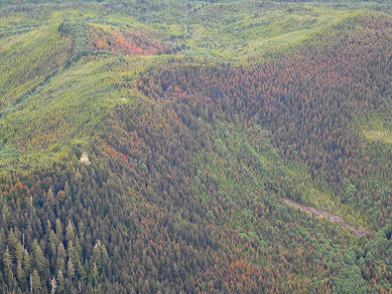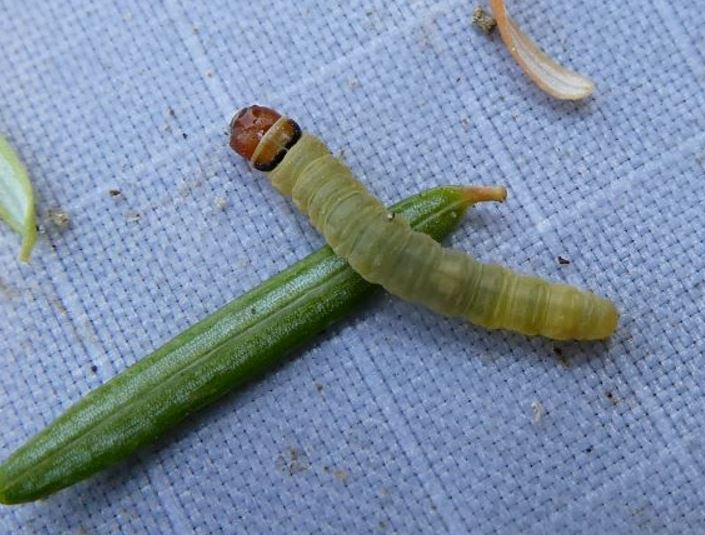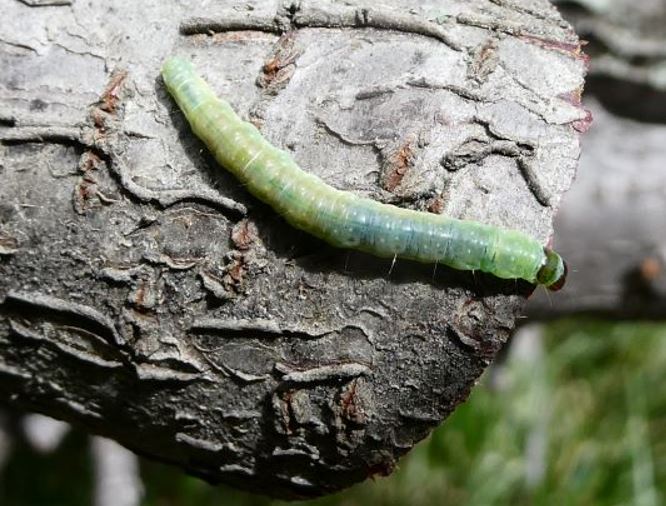Blackheaded budworm
Acleris gloverana
The blackheaded budworm is one of the most destructive defoliators in coastal B.C. forests. Population levels periodically reach outbreak levels at 10 to 15-year intervals. Outbreaks have been recorded since the 1930s.
On this page
Description
Larvae have black or brown heads, their bodies are greenish in colour and up to 18mm long.
Larvae pupate in August on the branches of host trees and emerge as adults in late August or early September.
Host tree species
The western blackheaded budworm prefers to feed on the upper crowns of dominant and codominant trees. Western hemlock and true firs are the preferred hosts but Engelmann spruce, white spruce and Douglas-fir can also be subject to defoliation. All ages of trees are susceptible.
Damage symptoms
Trees can be completely defoliated during a heavy attack. Severe defoliation can result in growth reduction and susceptibility to other biotic or abiotic forest health factors. Trees can die after experiencing successive years of severe defoliation.
Defoliation is visible in the summer and from a distance the defoliated trees will have a reddish-brown hue.
Other defoliators such as the western spruce budworm cause similar damage.

Damaged trees
Identification images

Larvae

Larvae
Further reading
Read more about the blackheaded budworm in the Field Guide to Forest Damage in B.C. (PDF, 6.6MB)
Contact information
Contact us if you have further questions about defoliators or how they are controlled in B.C.
